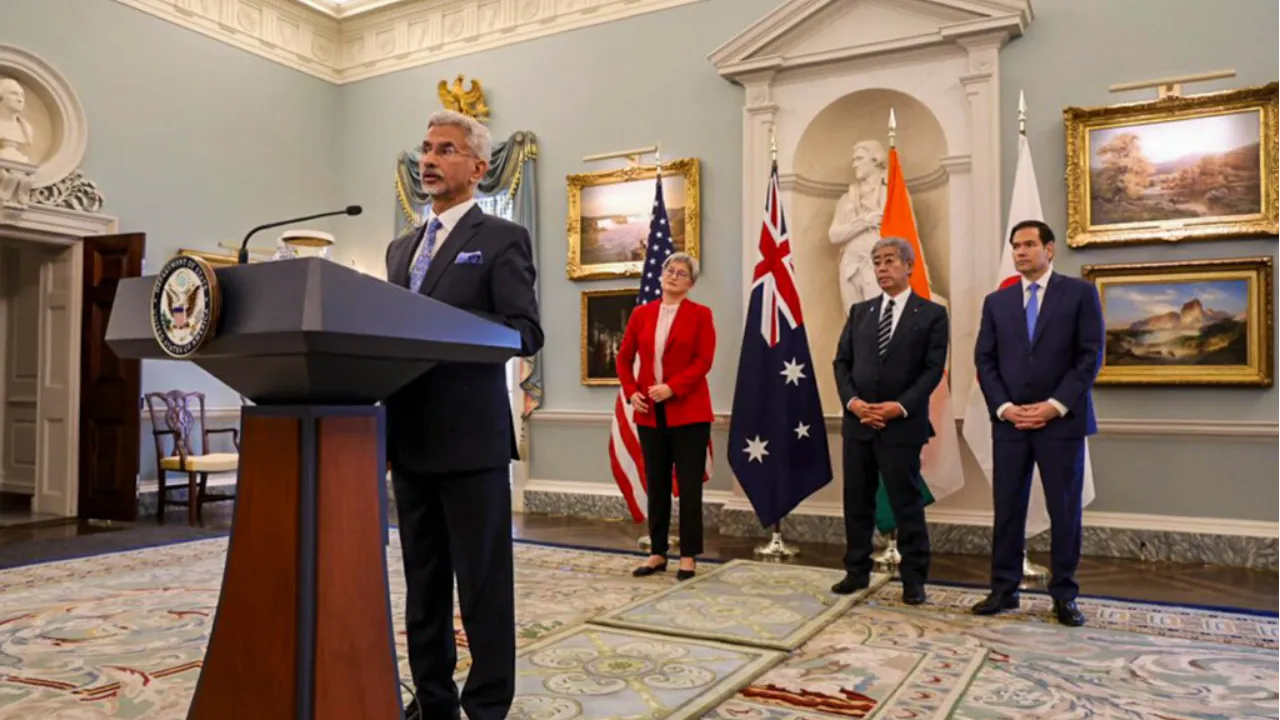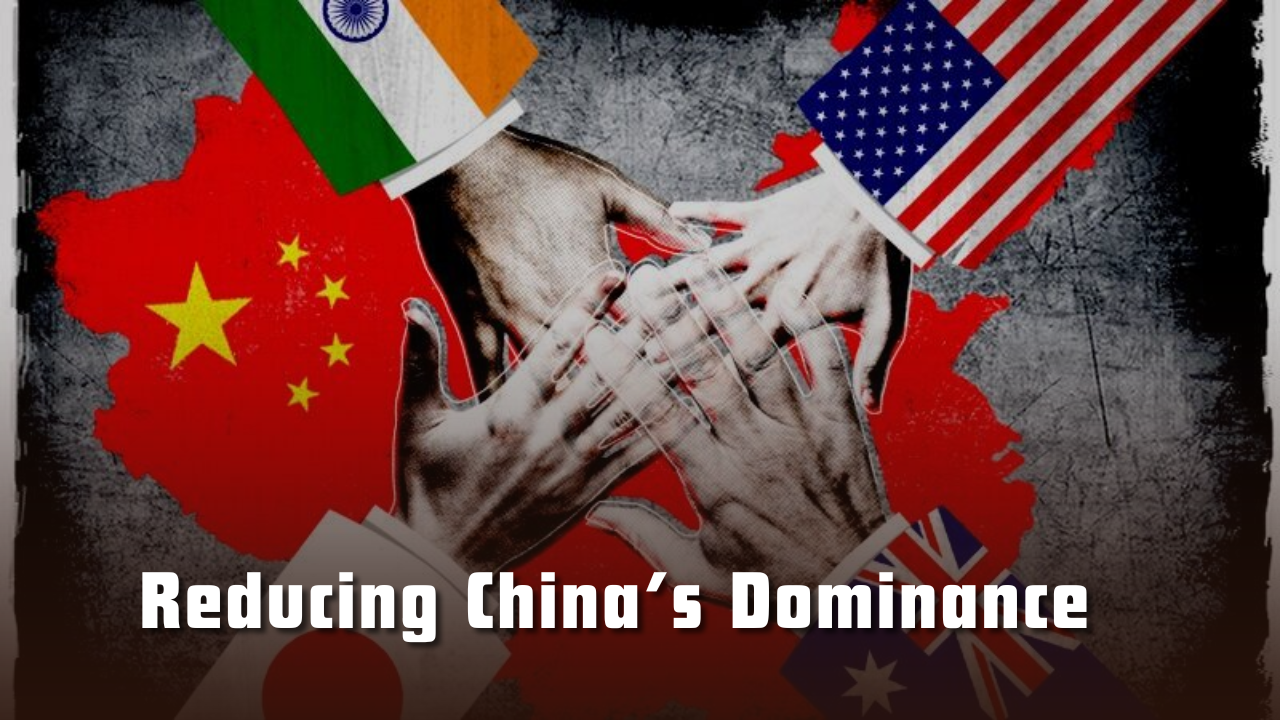Securing Critical Minerals: The Quad’s Strategic Move
Explore how the Quad nations aim to reduce China’s mineral dominance by securing resilient supply chains in critical minerals. Strategic and timely analysis.

Introduction: Why Critical Minerals Matter Today
In today’s interconnected world, minerals are more than just substances dug out of the ground. They are essential ingredients in technologies that define our daily lives, from smartphones to renewable energy solutions and advanced defence equipment. These critical minerals include lithium, cobalt, and rare earth elements, without which progress in science, technology, and environmental sustainability would come to a standstill. Yet, a major concern looms over the global supply of these resources: China holds overwhelming control over their production and processing, “an extremely dominant position in global critical mineral supply chains” (Amoha Basrur’s “The Quad Critical Minerals Initiative,” ORF, July 19, 2025). This monopoly has made nations uneasy, especially when political disagreements arise. In response, the Quad — a strategic alliance of Australia, India, Japan, and the United States — announced the Quad Critical Minerals Initiative in 2025 to build a more secure and resilient supply network. This essay explores the background, problems, goals, evidence, challenges, and solutions of this initiative and why it matters.
The Global Context of Mineral Dependency
The geopolitical landscape surrounding critical minerals is shaped largely by China’s dominance in the field. It not only has rich domestic reserves but also invests heavily in mines across Africa and South America. Its share in processing is even more striking, with control over approximately 60% of lithium, 90% of rare earth elements, and 62% of cobalt refining. These numbers reflect how deeply other nations depend on China. Such concentration of power became evident during the 2010 dispute with Japan over the Senkaku Islands when China reduced mineral exports as a form of pressure. Similar actions occurred in 2024 and 2025, when China responded to U.S. policies by suspending exports of critical minerals. These instances underscore the urgency of finding alternative sources.
The Core Problem: Fragile Supply Chains
This reliance on one country for key materials makes the global supply chain vulnerable. As the Quad Foreign Ministers pointed out, “overreliance on a single country exposes industries to economic coercion, price manipulation, and supply chain disruptions” (Basrur, 2025). Any conflict or trade disagreement with China could result in sudden shortages, skyrocketing prices, or halted production across various industries, including energy and technology. The fear is not abstract — it is based on recent history. To avoid such vulnerabilities, the Quad recognises the need to diversify mineral sources, ensuring that no single nation can monopolise this crucial part of the global economy.
A Strategic Solution: The Quad’s Joint Vision
The Critical Minerals Initiative seeks to strengthen economic security by reducing strategic dependency and improving collective resilience among the Quad members. By coordinating efforts, the four countries aim to secure and diversify critical minerals supply chains, expanding access through mining, recycling, and better logistics. This effort is described by Basrur as one that “aims to strengthen economic security and collective resilience by collaborating.” The initiative also includes exploring electronic waste recovery and supporting private-sector participation. What sets this effort apart is that it views critical minerals not just as trade goods, but as security assets — vital for long-term sovereignty and innovation.
The Underlying Belief: Together Is Stronger
The initiative rests on a clear belief: that joint action will yield better results than working alone. If Quad countries “deepen their cooperation… they can collectively build a resilient critical minerals supply network” (Basrur). Each partner brings different strengths — Australia’s natural resources, the U.S.’s capital and research capacity, Japan’s technical processing knowledge, and India’s growing industrial infrastructure. Together, they can fill the gaps in one another’s systems. This collaboration would also provide a model for emerging economies in Asia and Africa, showing how international partnerships can be both ethical and effective.
Evidence from the Past: Why This Plan Makes Sense
History supports this strategic approach. China’s dominance has been exercised before as leverage. For instance, “China first leveraged its dominance in 2010, during a dispute over the Senkaku Islands” (Basrur), cutting off mineral exports to Japan. This had an immediate impact and forced Japan to revive its domestic mineral processing capabilities. The trend continued in 2024 and 2025, as China banned exports to the U.S. in retaliation for semiconductor restrictions. These repeated actions prove that critical minerals are more than economic tools — they are instruments of geopolitical pressure. The Quad’s plan, therefore, is grounded in these realities.
Challenges from Within: Unity Tested by Trade Tensions
Despite shared goals, tensions within the Quad could pose significant challenges. The initiative’s success depends on mutual trust and sustained collaboration, yet recent developments have tested this unity. As Basrur notes, “US tariffs have affected its trade relations with all three partners.” Additionally, India suspended a rare earth export agreement with Japan, and the U.S. has begun reassessing its commitment to AUKUS. These examples reveal how internal disagreements could slow progress. Moreover, setting up new facilities and reshaping the global supply network will take time and resources. Without patience and shared commitment, the initiative may falter.
The Way Forward: A Call for Commitment
To prevent the Quad Critical Minerals Initiative from becoming another symbolic effort, all four members must act decisively. As Basrur puts it, “All four members need to commit to investments and timelines that reflect their shared threat perception.” This involves clear planning, mutual compromise, and shared investment. Beyond simply reducing dependence on China, the goal should be to create an inclusive, transparent system that can offer sustainable growth to all involved. This vision must be driven by genuine partnership and mutual respect, not just geopolitical rivalry.
Conclusion: Why This Initiative Matters
The Quad Critical Minerals Initiative is more than a diplomatic project; it is a reflection of the changing priorities of a world where resources are power. By challenging the dominance of a single supplier and offering a new model based on partnership, transparency, and shared values, the Quad has an opportunity to reshape the global supply chain landscape. Yet this vision will only succeed if backed by trust, investment, and action. As the world moves toward greener technologies and greater digital connectivity, the need for secure access to critical minerals will only grow. The time to act is now — and the Quad must lead the way.
Subscribe to our Youtube Channel for more Valuable Content – TheStudyias
Download the App to Subscribe to our Courses – Thestudyias
The Source’s Authority and Ownership of the Article is Claimed By THE STUDY IAS BY MANIKANT SINGH



